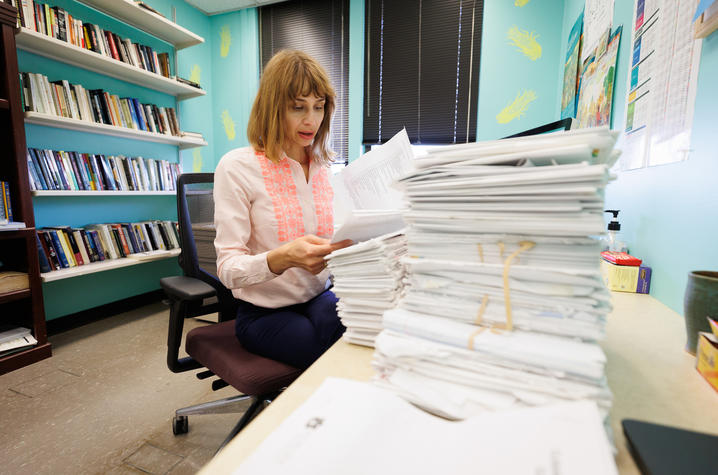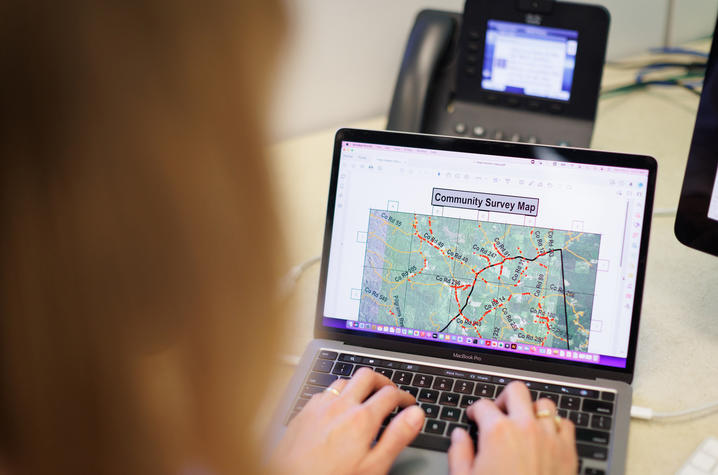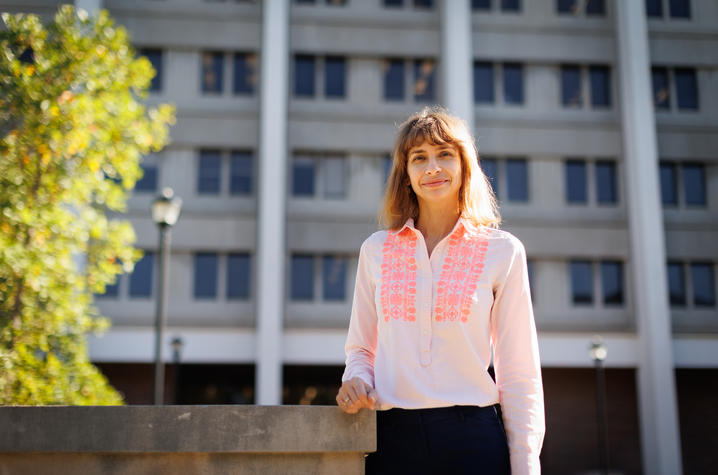UK researchers investigate cancer cluster in Alabama town
LEXINGTON, Ky. (Oct. 5, 2022) — Fruithurst is your quintessential small town. Located in Cleburne County, Alabama — just five miles on the other side of the Georgia state line — only a few hundred people call it home.
Christy Hiett is one of those people.
Born and raised in the tight-knit community, she now serves as principal of Fruithurst Elementary — the same school she attended as a young girl.
“Fruithurst is a very small community where the school is a large part of the community, and the community is a large part of the school.”
That’s why Hiett became concerned when a growing number of people, including her students, were diagnosed with cancer.
“When children started being diagnosed with leukemia, people in the community looked to me for answers,” she said. “I became passionate about this issue because it was impacting children, and children are my passion. This tugged at my heart greatly.”
With dogged determination, Hiett began searching for answers. “I’m a person that wants answers to our problems, and I typically take the lead in finding those answers — not waiting on someone else to do things for me. Therefore, I started researching.”
But this was a major undertaking, and Hiett couldn’t do it alone.
At her urging, an interdisciplinary team of geoscientists and sociologists from the University of Kentucky, the University of Alabama and Auburn University began collaborating to learn more about the possible cause behind the high cancer prevalence rates in Cleburne and the neighboring community of Muscadine, Alabama.
“Communities are gatekeepers of the most important knowledge to take on cancer clusters,” said Loka Ashwood, Ph.D., associate professor in the Department of Sociology in the UK College of Arts and Sciences. “They can and should be incorporated into research.”
“As a scientist, I am driven by the service to society. My research group uses science to inform society about environmental issues,” said Natasha Dimova, Ph.D., a hydrogeologist with expertise in radioactivity from the University of Alabama. “This project had a direct connection to a vexing social and health problem, and we were grateful to provide data to help understand the scope of the issue.”
Through a study titled, “Rural and Community-Based Cancer Cluster Research,” the team launched a communitywide project. Together, they conducted surveys, and through that research, they learned prevalence rates for 16 types of cancer in the Fruithurst Elementary School District were higher than national rates — particularly for melanoma (6.7 times the national average) and lung cancer (9.2 times the national average).
Further results confirmed the communities’ fears.
“We identified a relationship between pesticide exposure and the drinking of well water as statistically significant in a model of environmental exposures,” Ashwood explained. “Our rapid response water and soil samples also uncovered contaminants.”
According to the study, the wells showed higher than acceptable levels of heavy metals and semivolatile organic compounds linked to cancer. The contaminants also included an industrial chemical, Bis(2-ethylhexyl) phthalate, at levels that exceeded federal limits for municipal water systems.
As a result, Hiett and community members launched an activist group — Cleburne Cancer Concerns.
“Residents have been able to pursue direct action, such as the installation of reverse osmosis systems to reduce exposure,” Ashwood said. “Cleburne Cancer Concerns is also advocating that county commissioners end spraying the herbicide MSMA Target 6 Plus on roadsides.”
“Working on this project has helped me understand how community-based participatory research actually works in practice and what outcomes are possible when researchers and community members draw on their knowledge and skills for social and environmental change,” said KC Vick, a doctoral student in the UK Department of Sociology.
A paper on the research was recently published in Environmental Justice.
“Our research provides a helpful explanation of how communities and researchers can work together to do more relevant cancer cluster research that works toward change and enables action,” Ashwood added. “Our research also provides a template for other communities seeking to address cancer cluster research but not sure how to engage with researchers.”
The common saying goes — “knowledge is power.” Now, the community of Cleburne is equipped with the data needed to tackle this challenge and bring about change.
“I could not have accomplished anything related to the cancer research if it had not been for the researchers with whom I collaborated. I desperately tried to find answers on my own prior to meeting Dr. Ashwood, but I was met with roadblock after roadblock,” Hiett said. “I am forever grateful for the help I received and for the help we were able to provide for my community.”
As the state’s flagship, land-grant institution, the University of Kentucky exists to advance the Commonwealth. We do that by preparing the next generation of leaders — placing students at the heart of everything we do — and transforming the lives of Kentuckians through education, research and creative work, service and health care. We pride ourselves on being a catalyst for breakthroughs and a force for healing, a place where ingenuity unfolds. It's all made possible by our people — visionaries, disruptors and pioneers — who make up 200 academic programs, a $476.5 million research and development enterprise and a world-class medical center, all on one campus.







